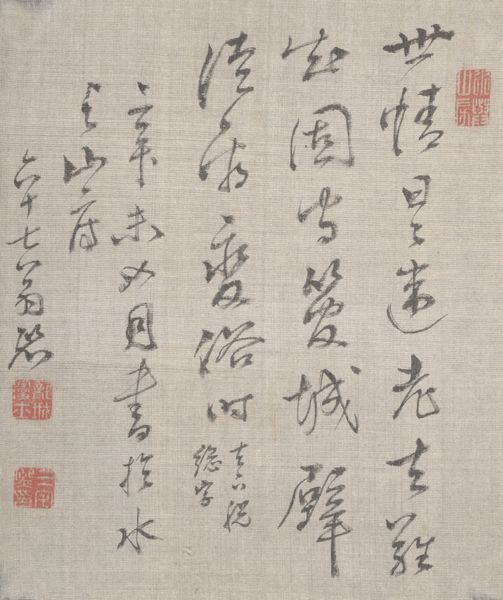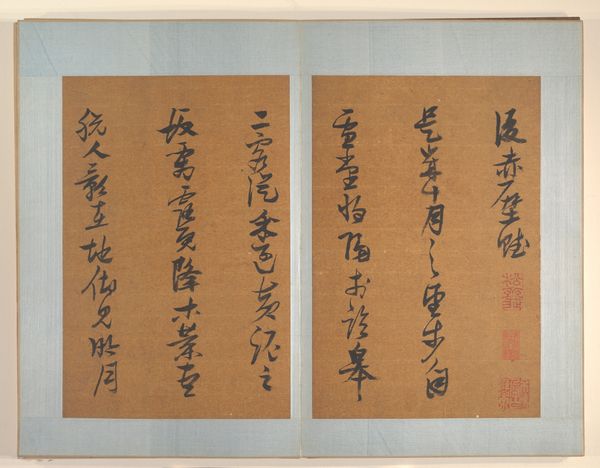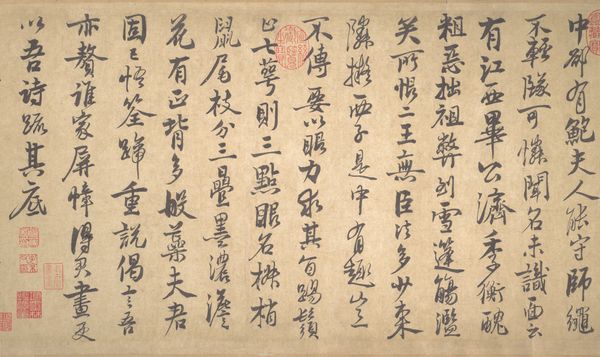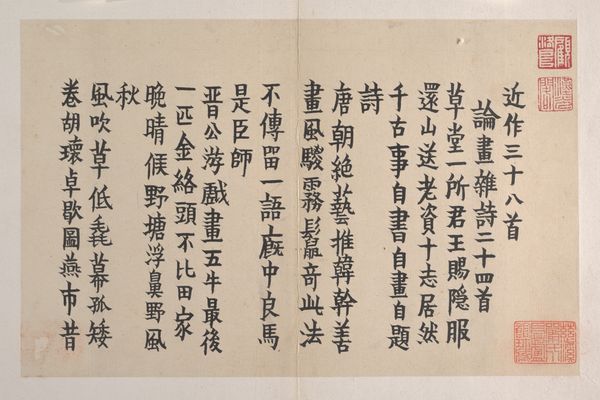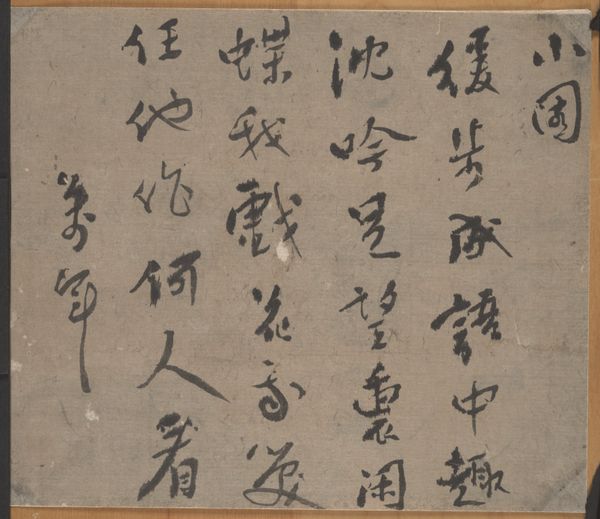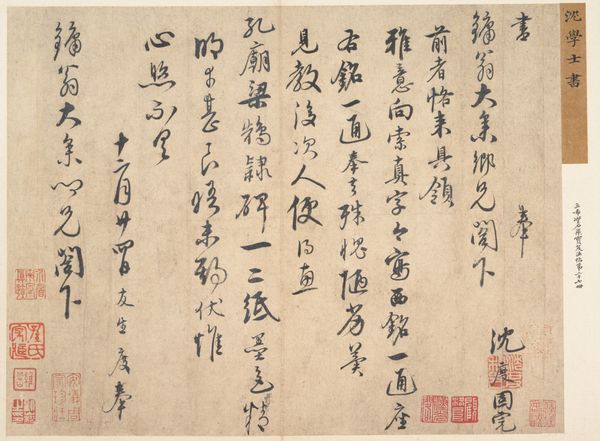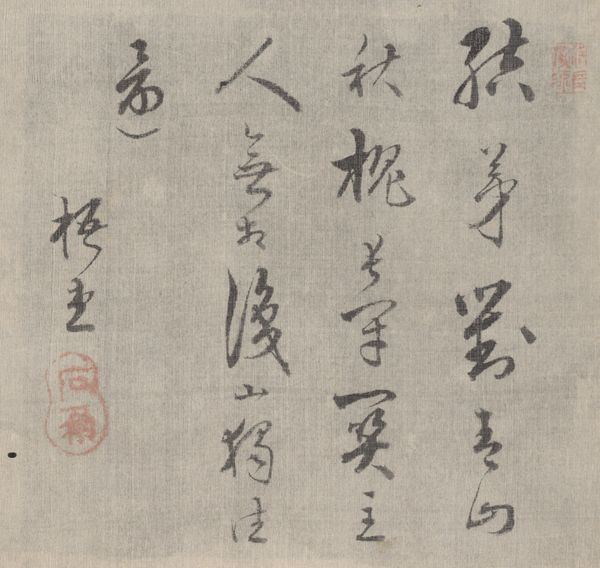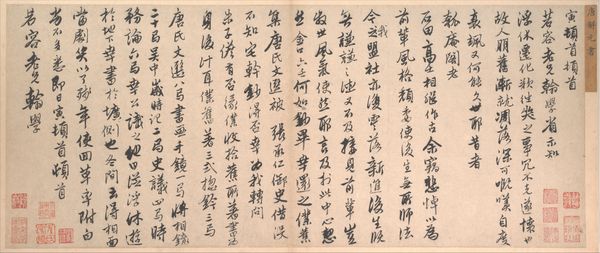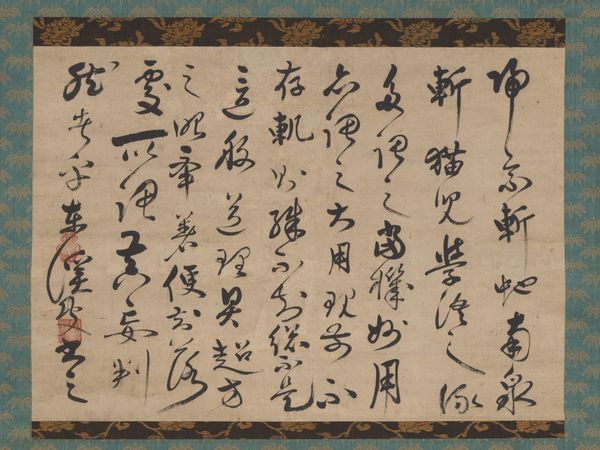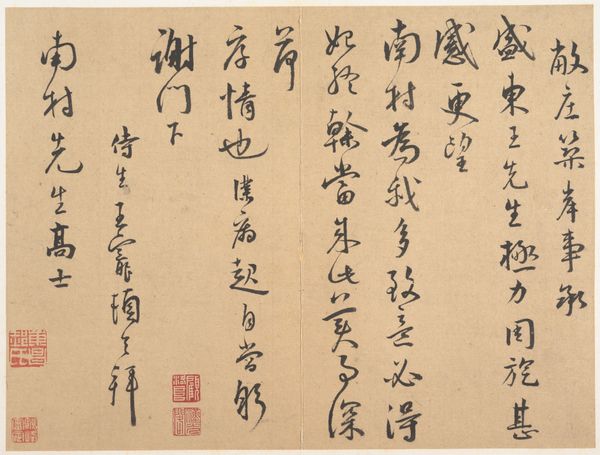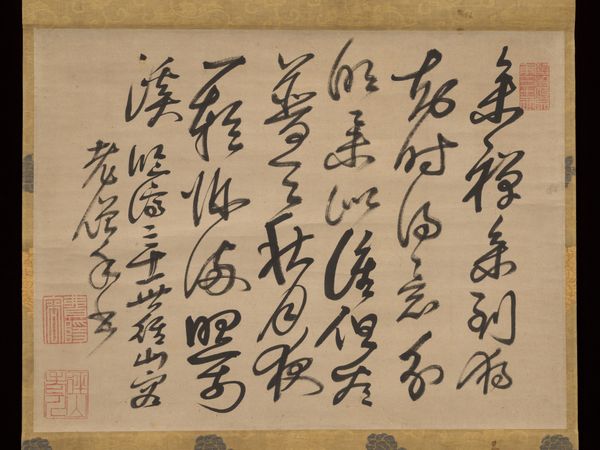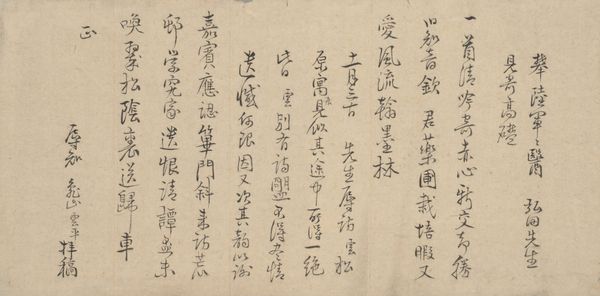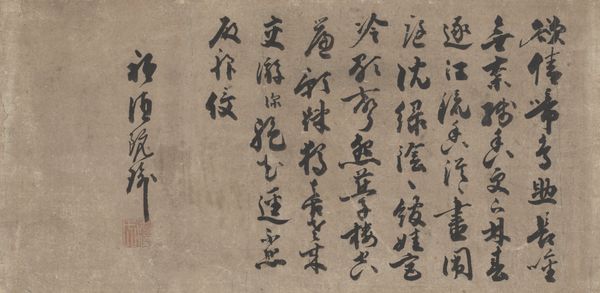
Poem on the Theme of a Monk’s Life 1300 - 1349
0:00
0:00
drawing, textile, paper, ink
#
drawing
#
medieval
#
asian-art
#
textile
#
paper
#
ink
#
calligraphy
Dimensions: Image: 16 x 23 3/8 in. (40.6 x 59.4 cm) Overall with mounting: 51 x 29 1/8 in. (129.5 x 74 cm) Overall with knobs: 51 x 31 3/16 in. (129.5 x 79.2 cm)
Copyright: Public Domain
Editor: We are looking at "Poem on the Theme of a Monk's Life," an ink drawing on paper from the 14th century by Sesson Yūbai. I’m immediately struck by the strong vertical movement and the visual rhythm of the calligraphic strokes. It's like a dance across the page. What elements of its time do you feel are crucial to interpreting this artwork? Curator: It's critical to recognize that this wasn't created in a vacuum. Monastic life in the 14th century was heavily shaped by political instability and social change, especially as Buddhism began to reconcile with political power. Does this influence the poem, would you say? Editor: I suppose the seeming austerity of the work, limited color, suggests a sort of detachment from earthly concerns…but how can one reconcile such art, and a poem about monasticism, with sociopolitical elements? Curator: Consider the role of calligraphy in that era. It wasn’t just writing; it was a cultivated art form tied to power and status. Monasteries themselves held significant influence, and artistic expression could serve to legitimize or critique existing structures. It’s an engagement with, not necessarily escape from, politics. The act of writing was almost a form of authority, then. Editor: So, you’re suggesting the creation and display of such work was almost like a soft power play in its time. A cultural message about detachment masking an engagement with governance and social norms. Curator: Precisely. Think about who had access to create, view, and interpret such works. That tells you a lot about the intended audience and the underlying power dynamics at play. Were these ideals truly representative of a monk's life, or a projection? Editor: I hadn't considered that the idealized aesthetic itself was a tool. That contextualization changes my entire understanding. Curator: It’s a potent reminder that even the most seemingly spiritual expressions are interwoven with the social and political realities of their time. Now I look at this art through the lenses of monastic engagement in socio-politics and not simple calligraphy only.
Comments
No comments
Be the first to comment and join the conversation on the ultimate creative platform.
